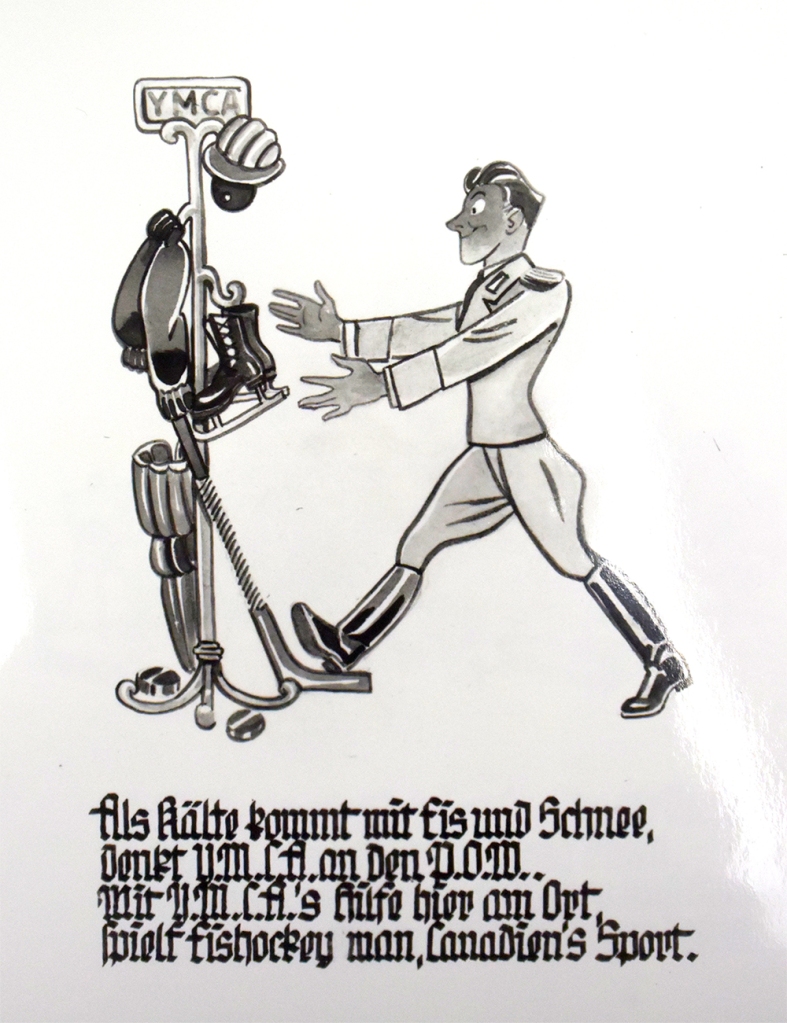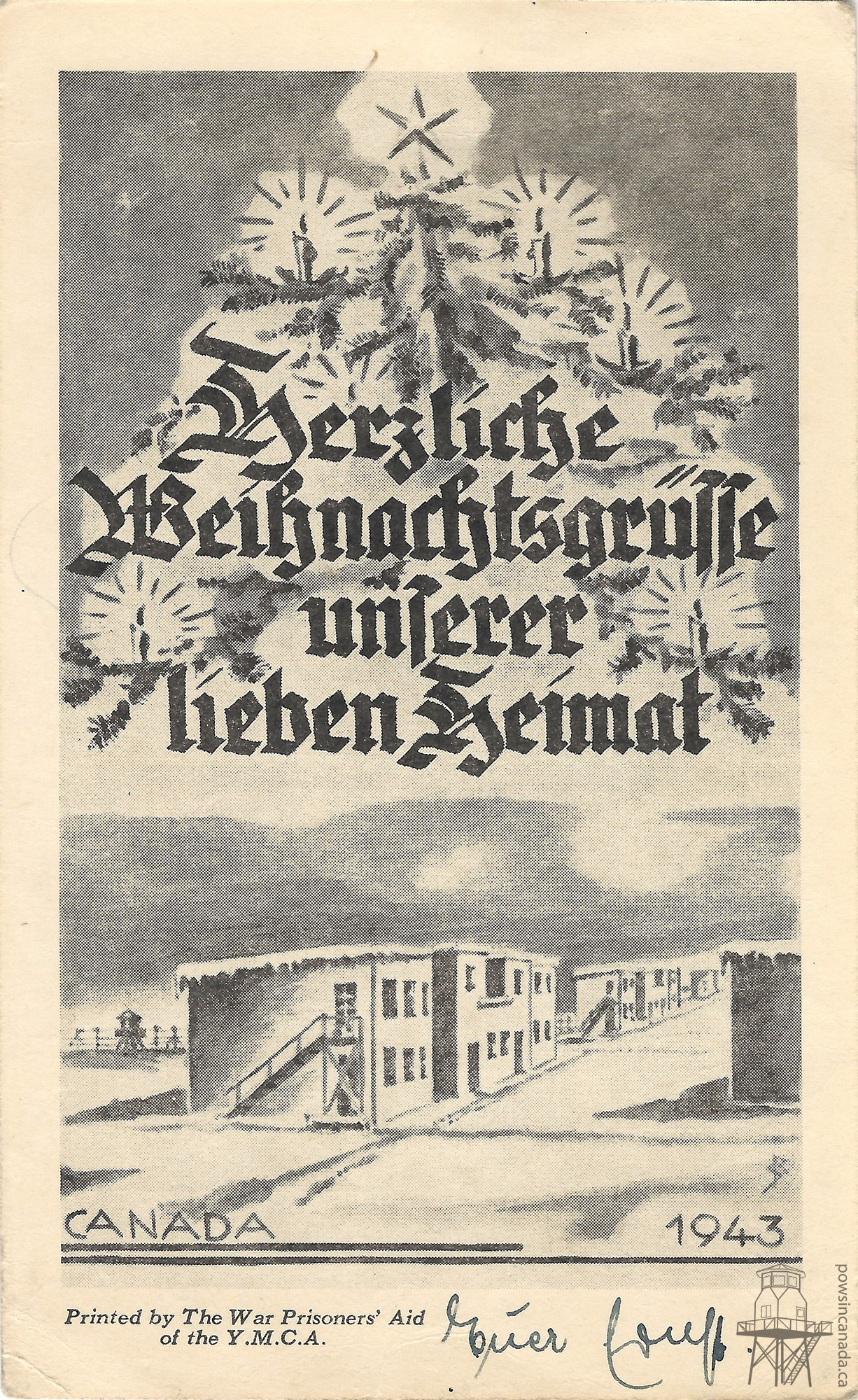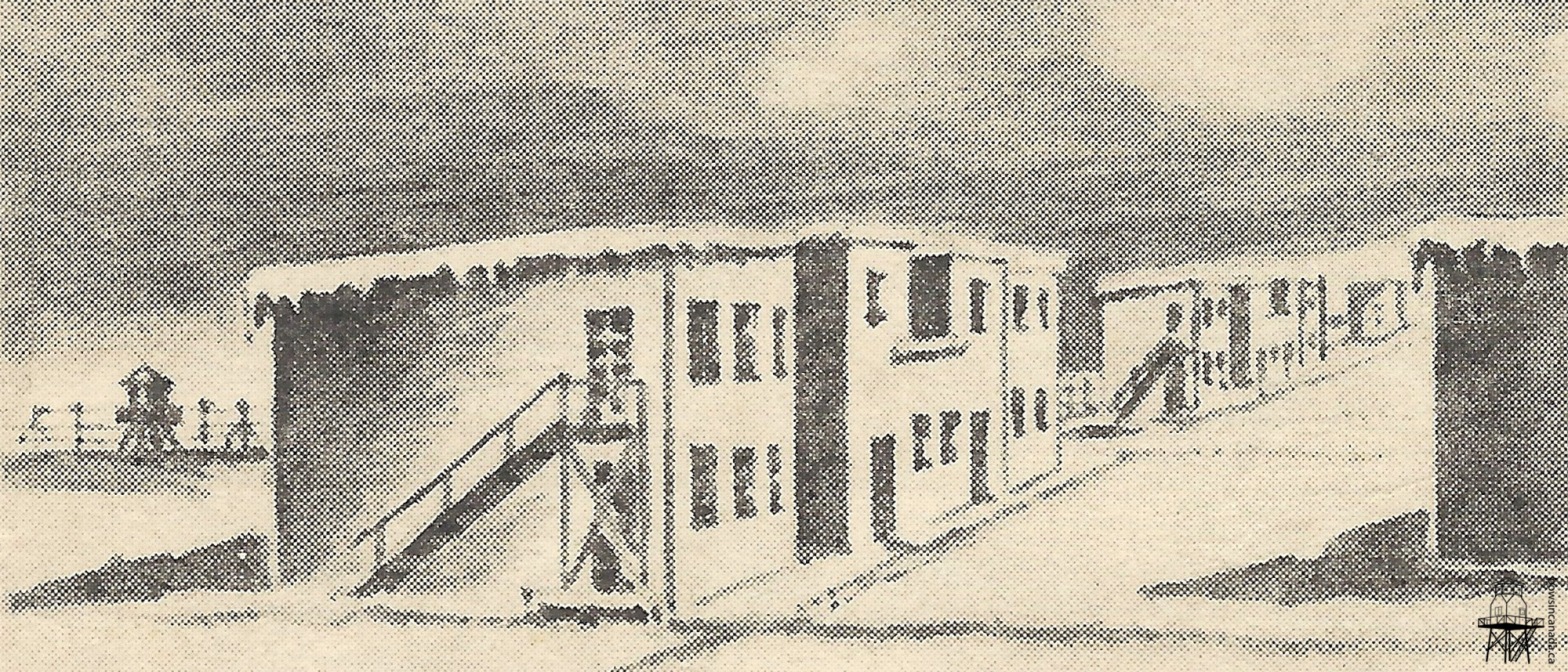Christmas and the holidays were always a difficult time for prisoners of war interned in camps around the world. The holidays often emphasized the great distance between prisoners and their loved ones and, with mail – delayed by weeks or months – the only bridge between them, morale was often low. But one thing the prisoners could count on to improve their spirits was the War Prisoners’ Aid of the YMCA.
Established at the onset of the war, the War Prisoners’ Aid was a division of the YMCA dedicated to meeting the educational, recreational, and religious needs of prisoners of war interned across the world, regardless of “race, creed, or social theories.” Representatives from the organization regularly visited internment camps and labour projects to see the camps’ conditions firsthand and to meet with the POWs to discuss what could be done to improve their time in captivity.
When it came to Christmas, the War Prisoners’ Aid did its utmost to bring some joy to the camps. On top of items regularly issued to camps, the organization provided POWs with Christmas gifts ranging from Christmas tree and lights to musical instruments and sporting equipment. In 1943 some of the many articles sent to POWs and internees in Canada included string instruments, gramophones and records, prints of Canadian art from the National Gallery in Ottawa, Christmas decorations and lights, and Christmas cakes “of formidable weight.”

In addition to these gifts, the War Prisoners’ Aid also printed and distributed Christmas cards to POWs across the country. Prisoner of War artists submitted designs, of which a select few – or one – were printed each year. The War Prisoners’ Aid selected the design seen below, believed to be from an artist at Camp 133 (Lethbridge), for its 1943 card. The artist’s identity remains unknown, simply signing the work with his initials, which appear to be “RS” or “SR.” Some 50,000 copies of this postcard were printed and given to the prisoners so that the cards could be mailed to family back home.

The text “Herzliche Weihnachtsgrüße unserer lieben Heimat” (“Heartfelt Christmas greetings, our dear homeland” – thanks Bernie!) is imposed upon a Christmas tree decorated with candles while several camp barracks, covered in a layer of snow, as well as a guard tower and barbed wire fencing, are illustrated below. This particular example was mailed by Ernst Dehler, a German soldier in Camp 133 (Lethbridge), to his family in Erlangen.
The work of the War Prisoners’ Aid did not go unnoticed, with camp spokesman and several prisoners routinely taking the time to emphasize their thanks. In 1943, War Prisoners’ Aid Director Dr. Jerome Davis received a letter from a former internee who, after arriving in Canada from the United Kingdom, had been re-categorized as a refugee and subsequently released. Recalling his time at Camp I (later Camp 41) at Ile-Aux-Noix, Quebec, the unidentified individual thanked Davis for the organization’s efforts, noting their work was “a topic any of my fellow-internees in Canada will always speak about in terms of highest praise and sincere gratitude.”
Inside barbed wire in a strange country, we all had felt that Christmas 1940 would be a very grim affair. But then an invisible Santa Claus sprang a big surprise on us, and changed the whole outlook. Heavy boxes were lugged into the camp office, and a few people in the know worked for many hours behind locked doors. On Christmas Eve it all came out. Each hut had its brightly lit Christmas tree, and before it the Hut-Father – in charge of 70 to 80 men – distributed to everyone of them a big paper bag with all sorts of little comforts; presents from the Canadian Y.M.C.A. at Toronto. All of a sudden there were happy smiles and a Christmasy spirit swiftly crept around the rather cramped living quarters. From the youngsters in their ‘teens to the grey ones well over sixty, all were as pleased as little boys.
Unknown Author to Dr. Jerome Davis quoted in Dr. Jerome Davis, “Report of Work in the Canadian Internment Camps during the months of April, May and June 1943. University of Toronto Archives.
The prisoners never forgot the work of the War Prisoners’ Aid and Boeschenstein continued to receive letters from former POWs long after the war. “It became more and more evident,” the author continued, “that the Y.M.C.A. people had set their minds on making us as happy as could be under the circumstances.”
Merry Christmas and Happy Holidays!

Hi, Michael, This is great. As you know my father was at Camp #133, but I have never seen these cards in any of the material that was returned to me from my German relatives. Wonderful. The first card, translated, goes as follows: “As the cold arrives with ice and snow, The Y.M.C.A thinks of the P.O.W., Here, at this place, with the help of the Y.M.C.A., One can play (ice)hockey, Canadian’s sport.” The Germans knew about hockey, as their national team won bronze at the 1932 Winter Olympics.
Also, a wee correction in the translation of the greeting card, if I may. The Christmas greeting should read: “Heartfelt Christmas greetings, our dear homeland.” The word is “unserer” not “unterer.”
Wishing you and your family all the best this Christmas and for 2024! Sincerely, Bernie Range
Thanks Bernie, much appreciated! All the best in the new year!
Thanks Michael
Have a Merry Christmas
Cheers
George Romick, Captain (Ret’d) OStJ, CD3 Director & Curator Thunder Bay Military Museum